Consultant
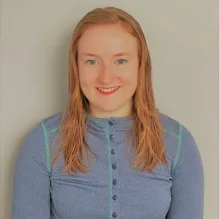 |
Bailey Arcilla, Consultant 2018-2020 and 2022 Bailey earned her Bachelor’s of Science in Biological Sciences and a minor in Mathematics from the University of Alaska Anchorage (UAA) in 2020. During her studies at UAA, she worked as a Fisheries and Wildlife Technician for the State of Alaska for two summers in Kodiak, Alaska. She also participated in research opportunities with two labs at UAA working with both threespine stickleback and arctic ground squirrels. Throughout her research journey, she has worked alongside labs at three universities for various aquatic biology positions including undergraduate research on Dolly Varden char with UAA (2018-2020), stickleback field dissections at UAA (2020), macroinvertebrate taxonomy and stream surveys with Columbus State University (2021-2022), and data analysis and manuscript preparation at University of Connecticut (2022) |
Fish and Research Technicians
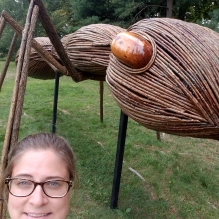 |
Katie D'Amello, Research Technician 2017-2019 Katie D’Amelio completed her M.S. at Drexel University in Philadelphia, PA where she studied the gut microbiome of army ants. Her Master’s research focused on identifying how different factors such as host genetics, transmission mode, and host natural history may shape the diversity of microbes found within the army ant gut. She switched from insects to vertebrates and studied the gut microbiota of stickleback fish in the Kat Lab, where she focused on sequencing bacterial communities of stickleback guts and creating whole genomes of bacterial isolates. Katie is now working in the Genetics program at NOAA Fisheries’ Auke Bay Labs in Juneau, focusing on salmon population genetics. |
| Jace Cussins, Fish Technician 2019 Jace Cussins was a fish technician for the lab for a during the 2018 University of Alaska financial crisis. Although his time with the lab was short, he had a big impact on fish care. |
|
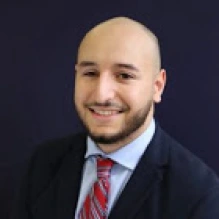 |
Duran Gonzalez, Research Technician 2021-2022 Duran earned his B.A. in Biological Sciences with a minor in Molecular and Cell Biology and a concentration in Exercise Science and Kinesiology from the University of Connecticut in 2020. During his time at UConn, he had the opportunity to work in two genetics and genomics research labs through the McNair Scholars Program where he learned several molecular biology techniques. After graduation, Duran worked in a biochemistry lab for a pharmaceutical company where he ran protein purification and activity determination assays for monoclonal antibody-based drugs. Since joining Dr. Kat’s lab, he is focusing on sequencing bacterial communities of stickleback guts while pursuing his M.S. in Applied Genomics through UConn’s Professional Science Master’s Program. |
| Sabrina Hock, Fish Technician 2018-2019 | |
| Ruth Isenberg, Research Technician 2016-2018 Ruth came to us from Doc (Mark O.) Martin’s lab at the University of Puget Sound, where she isolated and characterized microbes from tardigrades. At UAA, she focused on characterizing pH tolerance in stickleback gut isolates, isolating and sequencing whole genomes and microbial gut communities, and collected samples from the field. Ruth earned her PhD from the University of Wisconsin-Madison in 2023 |
|
| Rachel Kramp, Research Technician 2017-2019 Rachael was an undergraduate in Dr. Kat’s lab for almost 2 years before becoming a research technician. Rachael developed and implemented assays to isolate and characterize anaerobic microbes from stickleback and environmental samples and fluorescently labeling anaerobic microbes for localization assays. She was funded by INBRE Undergraduate Research Assistantship while she was an undergraduate. She now prepares and sequences gut microbes using our miseq, and collects fish that are undergoing rapid evolution in a nearby lake for both gut microbial analysis and SNP analysis for our collaborators at Stony Brook University in New York and UC-Berkley. She is now a graduate student at the University of Pittsburgh. |
|
| Abigail Nathlich, Research Technician 2018-2019 Abby started as an undergraduate helping with fish care and working as an assistant to research technician before she was promoted to lab technician. She completed many sequencing projects, maintained microbes, and mentored several students during her time in the Katlab. Abby is commercial fishing, and then plans on pursing research. |
|
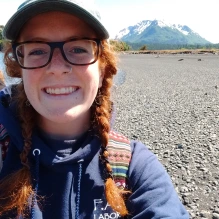 |
Kat O'Brien, Fish Technician 2017-2018 Kat O’Brien previously worked at Northeastern University modeling Atlantic cod (Gadus morhua) Essential Fish Habitat (EFH) in the Gulf of Maine. With the rising ocean temperature and cod stocks declining, EFH is a good indicator where the few remaining cod could be. This information enables researchers and managers to make cogent decisions on fishing area designations. Since coming to Alaska, O’Brien worked as a husbandry technician at UAA, working in both the vivarium and in the Milligan-Myhre lab. She was often found building the new fishility, in a basement plumbing tanks, or changing mouse cages. She is now the manager of the vivarium at UAA and pursuing her Master’s Degree at Alaska Pacific University |
Graduate Students
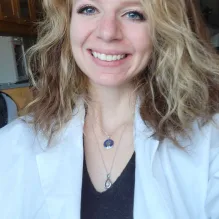 |
Kelly Crandall, Master's Student 2023 Kelly Crandall earned a BS in Biochemistry at the University of Denver in 2017 and a BS in Biology and a concentration in biochemistry from the University of Colorado-Denver in 2020. Her previous work includes isolation, identification, and quantification. of proteins required for the development of African Clawed Frogs. Kelly’s thesis focused on two projects: identifying and analyzing the ability of the gut microbiota to degrade microplastics and protect the host from plastic toxicity, and the identification and classification of Archaea found within the gut microbiome of stickleback to determine their role in the host. |
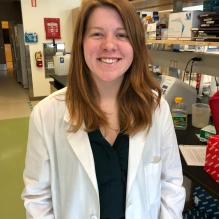 |
Kelly Ireland, Master's Studen 2018-2020 Kelly identified and characterized PAH degrading microbes within the threespine stickleback gut microbiota and how they may help the fish respond to crude oil exposure. As an undergraduate, Kelly worked on developing qRT-PCR assays for innate and adaptive immune genes in stickleback. Kelly earned an Undergraduate Research Scholarship through the UAA Honors College, a Molly Ahlgren scholarship through the American Fisheries Society, and a Summer 2017 Alaska INBRE Undergraduate Research Assistantship (URA). She graduated with a double major in biology and journalism, with honors in each department, academic honors, and leadership honors from the University of Alaska Anchorage. She was funded by the Arctic Domain Awareness Center. She successfully defended her Master’s thesis May 2020 and is now a PhD student in Dr. Brandon Brigg’s lab at the University of Alaska Anchorage. |
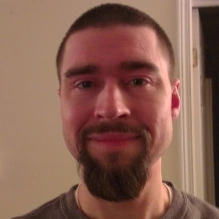 |
Ryan Lucas, Master's Student 2017-2020 Ryan focuses on understanding how host genetic background influences microbial community composition and immune response after exposure to clinically relevant levels of antibiotics, and whether stickleback from different genetic backgrounds select for different gut microbes. His work has been funded by an INBRE Graduate Research Fellowship. His teaching experience includes 2 years as a teaching assistant for Introduction to Microbiology for Health Science Majors, BIOL A240. He successfully defended his Master’s thesis May 2020. |
| Kenneth Sparks, Master's Student 2016-2019 As an undergraduate, Kenny worked with Dr. Emily Lescak and Ryan Lucas to develop stickleback artificial microbial communities based on antimicrobial resistant phenotypes to determine how microbial communities differ in response to antimicrobial challenge when exposed to antibiotics in vitro vs in vivo. Kenny earned an Undergraduate Research Scholarship through the UAA Honors College, and a Summer 2017 Alaska INBRE Undergraduate Research Assistantship. He was a Master’s student in Dr. Kat’s lab for a year before transferring to Dr. Jung’s lab to study the affects of circadian rhythms on host physiology.
|
|
| Levi Wagner, Master's Student 2019-2020 Levi examined the diversity of MHCII genes and the correlation to the diversity of stickleback gut microbiota. Levi earned a Bachelor of Science degree in Biological Sciences with a minor in Russian from the University of Alaska Fairbanks. As an undergrad, he studied freeze tolerance in poplar trees. His research career includes working with the Alaska Department of Fish and Game to tag and sample salmon species, quantifying gold in ore samples, analyzing criminal report data, and assisting in analysis of autopsy and pathology samples. He was funded through the Sloan Foundation and is active in ANSEP. He completed his Masters degree in the lab of Dr. Brandon Briggs at the University of Alaska Anchorage. |
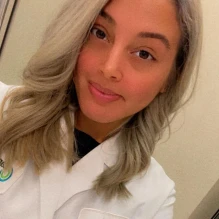 |
Liz Tirado
Liz earned her B.S. in Biology from Southern Connecticut State University in 2017. As part of a Microbiology course, she participated in the Small World Initiative where she grew her love for Microbiology. After graduation Liz has worked at a Microbiology lab for a Pharmaceutical company for the four years where she learned several techniques such as identifying bacteria/ yeast and mold by running PCR and Microsequencing, performing Mass Spectrometry, and several other skills. She is currently pursuing her M.S. in Molecular and Cell Biology with a concentration in Microbiology where her thesis is focusing on how exposure to Perchlorate changes the host microbiome in three spine sticklebacks. |
Postdoctoral Fellow
 |
Nicole Kirchoff, Postdoctoral Fellow Dr. Nicole Kirchoff (she/her) is a postdoctoral associate studying how the gut microbiome associates with vertebrate host behavior. She is also analyzing an ecotoxicological experiment to determine how herbicide use affects the gut microbiome of aquatic animals. During her PhD at Oregon State University, Dr. Kirchoff investigated environmental factors affecting the gut microbial composition of Pacific salmonids as well as associations between the gut microbiome of domestic dogs and dog aggression. In the future, Dr. Kirchoff hopes to apply her microbiome analysis skills to translation research while mentoring others in microbiome science. |
 |
Lucas Kirschman, Postdoctoral Fellow |
 |
Emily Liscak, Postdoctoral Fellow 2015-2018 Emily Lescak’s research focused on how host genetic background and gut microbiota interact to influence development and behavior in the host. She received an NSF broadening participation postdoctoral fellowship to study the effects of exposure to environmentally-relevant levels of antibiotics on somatic, immune system, and behavioral development in stickleback. In her graduate work, she used behavior experiments, morphological analyses, and population genetics to address questions focused on the stability of phenotypic asymmetry and bimodality in wild populations, the role of predators in shaping prey phenotype, the rate of evolution in the wild, and co-evolution of the nuclear and mitochondrial genomes. She worked for Alaska Department of Fish and Game, and is now doing independent consulting work for various agencies. |
 |
Amber Nashoba,Postdoc/research Professional 2017-2018 Dr. Nashoba is interested in the application of evolutionary theory to understand and address environmental change. Her dissertation research studied population-level adaptation, natural selection, and the response to selection of a native prairie legume (Chamaecrista fasciculata). This project focused on the empirical application of Fisher’s Fundamental Theorem of Natural Selection and among-year environmental variation in the form of trait relationships, adaptive capacity, and fitness landscapes. She recently completed a Future Faculty Fellowship at the Northeastern University; during this time, she examined allele frequency change in drought and salinity associated genes in newly restored Spartina alterniflora in a Rhode Island salt marsh. Amber Nashoba Google Scholar page |
Medical Students
Anastasia Khadjinova, 2018 (WWAMI) examined whether the host genetic background contributes to the ability of the microbiota to protect the host against pathogens, using stickleback as her model organism. She worked closely with Dr. Lucas Kirschman on this project.
Undergraduate Students, by starting year
2022
Gustavo Freitas, 2020-2022; helped set up the UConn lab, studied microbe-microbe interactions in vitro; lab technician summer of 2022 before starting medical school.
2020
Samantha Heubner, 2020:setting up the UConn lab
2019
Christopher Barahona, 2019: Fish care
Destiny Ropati, 2019: Fish care, characterization of microbes.
Nadia Sherman, 2019: Fish care
Alix Wells, 2019: Analysis of fish length in a rapidly evolving population of stickleback. Alix was accepted to medical school in Canada and will start in the fall of 2020.
2018
Sherrine Bustista, 2018-2020:Created fluorescent gut microbes for analysis of host-microbe interactions.
Cooper Danner, 2018-2019:Assist in the construction of the EBL stickleback facility. Identify new computational tools to analyze behavior data. Cooper will be a PhD student at the Rensselaer Polytechnic Institute in the Biomedical Engineering program in the fall of 2020.
Nikelle Dishon, 2018:Isolation and characterization of anaerobic microbes from stickleback microbiota
Anastasia Hanson, 2018: Influence of fluridone on metabolism and microbiota. Funded by the Undergraduate Research Scholarship through the UAA Honors College and the Alaskan Heart Institute. Was a Master’s student in the Chemistry department at UAA with Dr. Pat Tomco.
Tyler Howlette, 2018:Isolation of RNA to analyze immune system development in fish exposed to pathogens. Tyler was accepted in the WWAMI program at UAA.
Katherine Lessard, 2018-2020:Created fluorescent gut microbes for analysis of host-microbe interactions.
Patrice Timmons, 2018-2019:Patrice started as an undergraduate, and has continued with the lab as a volunteer after getting her undergraduate degree in Biology. She has focused on learning many techniques, including DNA isolation, image analysis, and tagging microbes with fluorescent tags with Dr. Emily Lescak and Katie D’Amelio. She developed protocols to identify microbes that can degrade plastic, and is now a PhD student at Northern Arizona University.
Kiana Verplancke, 2018, 2019:DNA isolation and sequencing of microbial communities, image analysis.
2017
Jeremiah Lewis, 2017-2018:Isolating and characterizing microbes from environmental samples; determining anti-microbial activity of those isolates. Jeremiah earned a Summer 2017 Alaska INBRE Undergraduate Research Assistantship (URA). Jeremiah has moved to MN, where he hopes to complete his degree.
Eli Matthews, 2017-2018:Mock community construction and determination of perchlorate resistance in gut isolates.
Jessica Pinard, 2017-2018: Characterization of unknown microbes. Jessica works for the Alaska Department of Public Health.
2016
Koral Campbell, 2016, 2017: Contributed to flow cytometry and MPO protocols to examine immune response in stickleback; identified potential pathogens to study.
Haley Miller, 2016:Behavior and somatic development in antibiotic treated larvae from different populations.
Brianna Triplett, 2016: Helped organize and establish the lab.
Keagan Whitcomb, 2016, 2018: Somatic and behavioral development in germ free and conventional fish.
High school students:
2018 Sp Elsa Hoppenworth, Gifted Mentorship
2016 Su Gary Hoppenworth, Hutton Scholars recipient
2015 Foster Birnbaum, independent research